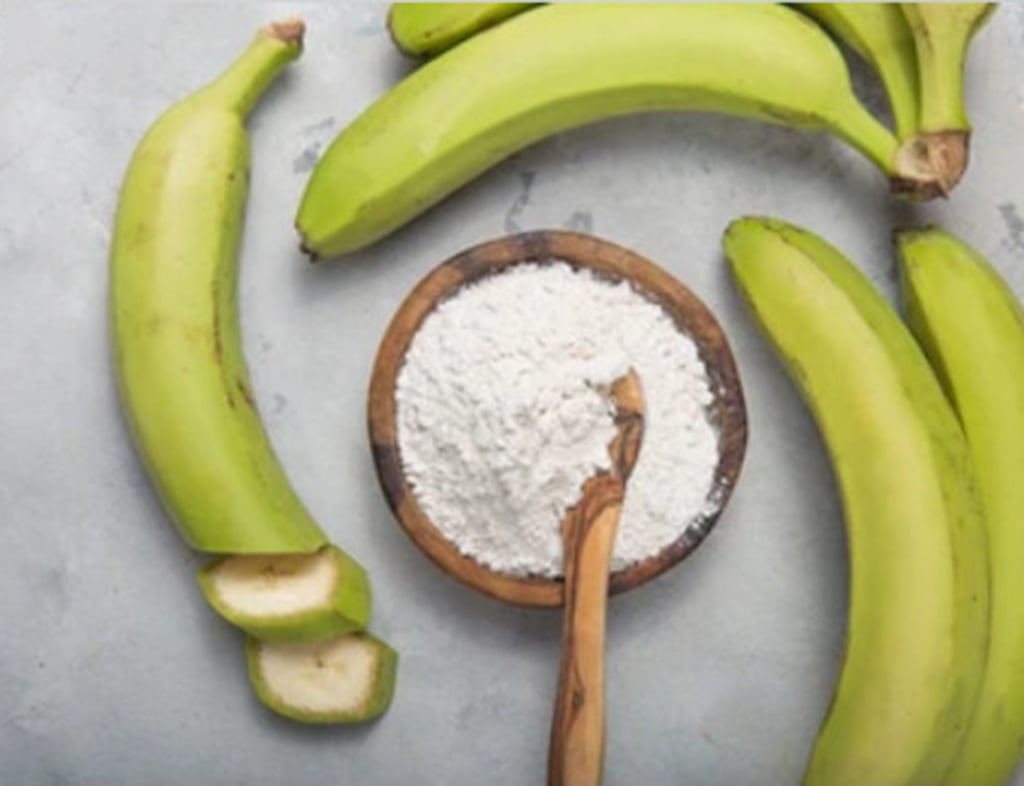There is growing scientific evidence that the gut microbiota plays a key role in the regulation of physiology and the development of various diseases. The composition and diversity of the gut microbiota are associated with carbohydrate and fat metabolism and inflammation.

Resistant starch, found in abundance in green bananas, may help with weight loss and improve insulin resistance.
Therefore, in the new study, scientists wanted to find out whether modulating the gut microbiome by supplementing with fiber in the form of resistant starch could help with insulin resistance and weight loss, and offer a potential treatment for metabolic disorders.
Metabolic syndrome is a cluster of risk factors — including high blood pressure, belly fat, high blood sugar and cholesterol — that occur together in the body and increase the risk of diabetes, heart disease or stroke.
Studies in mouse models have shown that eating a diet with carbohydrates that are primarily resistant starch reduces body fat and improves metabolism.
Now, scientists at the Shanghai Key Laboratory of Diabetes, Shanghai Diabetes Institute, Shanghai Diabetes Clinical Center, Shanghai University Medical School (China) want to study whether adding resistant starch to the diet of overweight people has a positive effect on obesity and metabolism.
The new eight-week trial, which included 37 overweight people, was divided into two groups: One group received a total of 40 grams of resistant starch per day, before meals - with a high amylose enzyme content - and a control group received only amylose enzyme without resistant starch.

Resistant starch diet is a breakthrough in weight loss and diabetes control
Results found that the group supplementing with resistant starch lost an average of 6 pounds (2.8 kg) and improved insulin resistance, according to News Medical.
Research also suggests that resistant starch has this particular benefit because it changes the composition of the gut microbiota. It helps improve levels of Bifidobacteria adolescentis in the gut.
From there, it affects lipid and fat metabolism by reducing inflammation, restoring the intestinal barrier, and altering bile acid composition.
Secondary bile acids are important in improving insulin sensitivity and fatty liver disease.
Foods high in resistant starch
Resistant starch is not broken down by amylase enzymes secreted by the body. During digestion, resistant starch is not broken down in the stomach or small intestine but moves into the large intestine or colon for the intestinal microflora to ferment this fiber.
Green bananas are the food with the highest resistant starch content.
Resistant starch is also found in cold cooked oats, cold rice, beans, cooked potatoes and sweet potatoes, according to the health news site Healthline .
Source link



![[Photo] Prime Minister Pham Minh Chinh chairs a special Government meeting on the arrangement of administrative units at all levels.](https://vphoto.vietnam.vn/thumb/1200x675/vietnam/resource/IMAGE/2025/5/9/6a22e6a997424870abfb39817bb9bb6c)


![[Photo] Magical moment of double five-colored clouds on Ba Den mountain on the day of the Buddha's relic procession](https://vphoto.vietnam.vn/thumb/1200x675/vietnam/resource/IMAGE/2025/5/9/7a710556965c413397f9e38ac9708d2f)


























































































Comment (0)